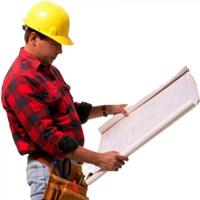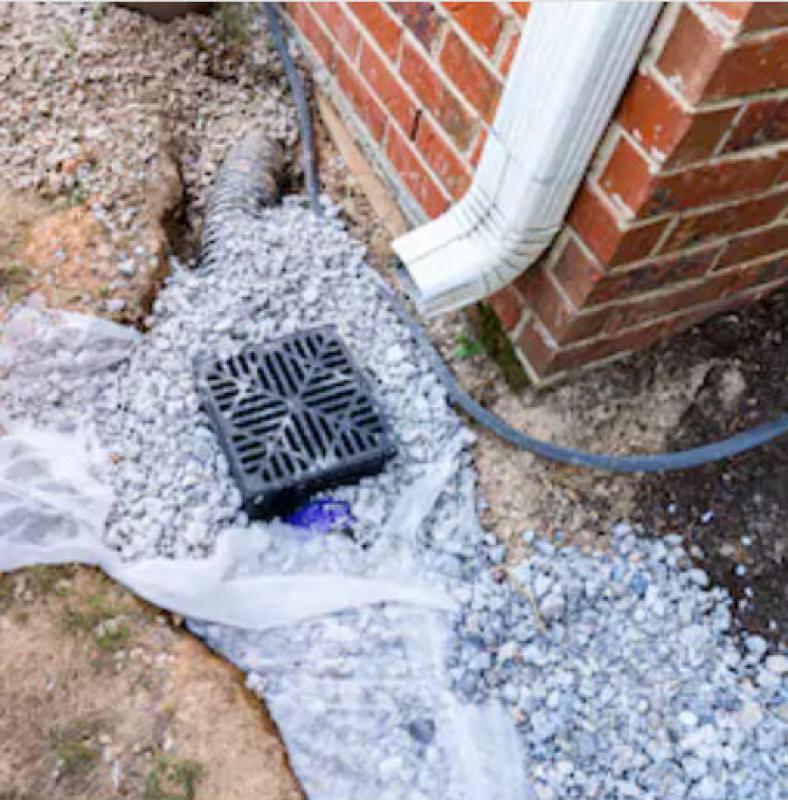How to Install Landscape Drainage
by Guest Post on May 10, 2020
If water is collecting or stagnating in your landscape then it means that there is a low area there and the water is not able to drain. If water keeps pooling and if the pooling is close to the foundation of your house, it can cause problems to the building in the long run. Additionally, you may find fungi growing in your lawn due to water pooling. The best option is to install proper landscape drainage so that water does not collect anywhere.
The things you need to install landscape drainage are, wooden stakes to mark the line, the gravel that you need to fill the ditch, PVC pipes for the water to flow, measuring tape to measure the distance, landscaping fabric for the gravel, landscaping staples to staple the fabric, PVC pipe connectors for the pipes to be connected and not to forget a shovel to dig.
First, you need to earmark the area where the water pools usually. You need to have wooden stakes with you and you need to use them to create a line that is straight and goes upwards from the point of water pooling. From the point that is higher than the water, pooling finds the nearest ditch where the water drains. Now you need to create a line that goes to the draining ditch and you can mark these with wooden stakes again. Ensure that the line that you are creating will take the water as far away from the foundation of your home as possible.
Next, you need to start digging the ditch or trench from the starting point. The trench should be a foot wide and 2 feet deep. The trick is to create a ditch as straight as possible, if you find any impediments in between, remove them, and ensure a clear path for the ditch. The ditch should be 2 feet deep at the starting point, after 10 feet of digging, your ditch should be 2 feet 1 inch in depth, after another 10 feet, the depth should be 2 feet 2 inches. Every 10 feet the ditch should be 1 inch more in-depth. The reason for the increase in depth is because water will flow easily and not stagnate.
Once the digging is complete, you need to place the landscaping fabric inside the ditch and then place the PVC pipes along the ditch. The pipes should be connected using the PVC connectors and the connection should be perfect. After placing the pipes you should fill the ditch with gravel. Do not fill the ditch completely, leave at least 4-6 inches for the dirt that you had removed from the ditch. After filling the gravel, staple the landscaping fabric over it and cover the ditch with the dirt. Level the ground and you are done.
This is a very long process and if you do not do this properly, you will face a recurring of the problem. The ideal solution is to hire drainage experts who will be able to solve the problem easily.
Popular Articles
Three Places to Spend Money on the Exterior of Your Home
When you have the exterior of your home remodeled, you are investing, time, energy and convenience into the project and you want to make sure that...
95796 Views
Homemade Headboards-Make an Upholstered or Wooden Headboard
Homemade headboards can add a lot of personality to any bedroom. They can be coordinated with existing furniture and room decor or they can be the...
74456 Views
When to Use a Brush, Roller or Sponge Brush
Brushes are a good choice for painting trim and woodwork. They are also useful for cutting in the edges around the top and bottom edges and corners...
71821 Views
Creating a Cottage Kitchen with Bead Board
Kitchen decor can range from modern and bold to elegant and elaborate by using strategic kitchen pieces. One of the most popular decorating trends...
52899 Views
Gas Fireplace Diagnostics and Troubleshooting
Follow these steps for diagnosing and troubleshooting Gas Fireplaces repairs. For the average DIYer, this may seem intimidating, depending on the...
30639 Views
Latest Articles
How Much Does It Cost To Take A Bath?
Plumbers know that a bath may seem like a relaxing luxury, but the real cost extends far beyond your water bill. The average soak uses 35 to 50...
on Apr 8, 2025
10 Concrete Patio Ideas on a Budget
A concrete patio can be a game-changer for your outdoor space. It is durable, versatile, and can be customized to fit your style. But what if you...
on Mar 25, 2025
Tips for Creating a Stunning Personalized Photo on Canvas
Order the unique beauty of a personalized photo on canvas and bring your memories to life. With a customized photo on canvas, you can transform...
on Mar 7, 2025
Best Areas to Buy Property in Singapore for Long-Term Growth
Singapore's real estate market remains one of the most stable and lucrative in the world. With limited land supply, strong governmental...
on Feb 18, 2025
Troubleshooting Excess Water in Your HVAC Secondary Condensate Drain Pan
When maintaining your air conditioning system, it is easy to overlook the condensate drain pan - until excess water starts pooling in places where...
on Jan 12, 2025
Featured Articles
What Type of Licensed Contractor Should You Hire?
on Feb 28, 2017
Hire Contractors / Estimates

Looking for a specialty project? There are many types of contractors available for your home improvement needs. Finding the right type of...
Sponsored Articles
Best Areas to Buy Property in Singapore for Long-Term Growth
on Feb 18, 2025
Real Estate / Finance

Singapore's real estate market remains one of the most stable and lucrative in the world. With limited land supply, strong governmental...
Actions
Top Categories
- Garden / Landscaping / Patio — 264
- Kitchen / Bathrooms — 240
- Real Estate / Finance — 203
- Appliance / Repair — 186
- Interior Design / Decor — 184
- HVAC / Air Conditioning — 148
- Cleaning / Maintenance — 144
- Improvements / Remodeling — 131
- Plumbing / Basements — 118
- Floors / Tile / Hardwood — 116
- Doors / Garages — 113
- Safety / Security — 113
Articles Archive
More DIY Articles
What Makes Cork Tiles Better Than Other Flooring Materials?
You might think that cork is only good to keep your wine bottles from spilling. While this is a great use of the cork material, it can also be used...
Busy as a Beaver: Easy-to-do House Cleaning Tips for Busy People
A universal truth for todays generation is that everybody is busy. You know that it’s true if you are one of those people who’s part of...
Glass Tile History
Glass tiles have been present in interior design since the second century BC. There was a great demand for mosaic art in this period, contributing...
Things to Consider Before Buying a Vacation Property
Do you have a strong desire for a vacation home? Your own vacation property can be a wonderful haven providing you with solitude and relaxation. It...
Tips for You to Make a Practical and a Well Designed Kitchen Cabinet
Most of the time kitchen cabinets are made from Oak, Maple, Pine, Cherry, Hickory, Poplar, Alder, and Birch. When you are thinking of designing...

